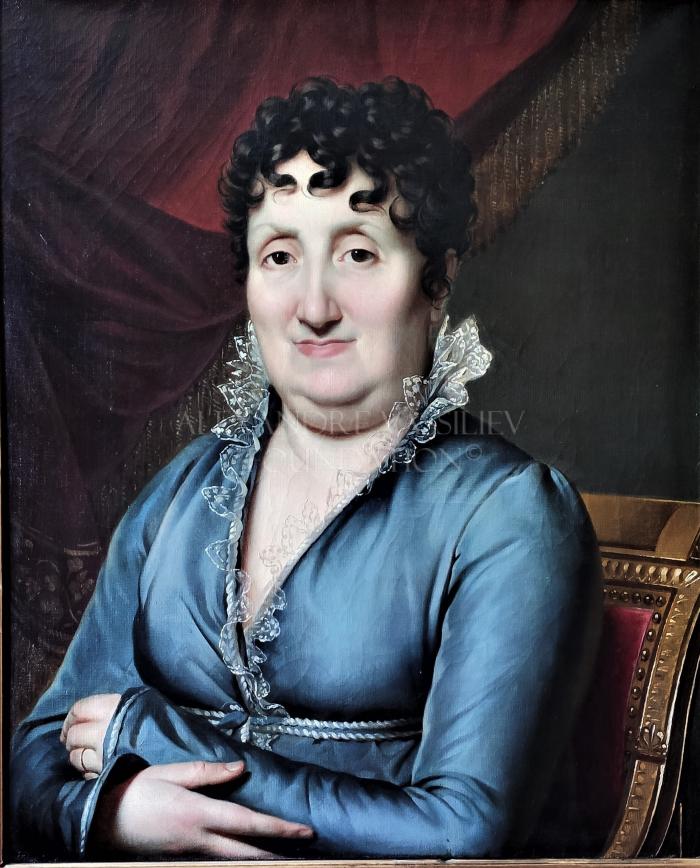Jean-Baptiste REGNAULT (French, Paris 1754-1829 Paris)
Jean-Baptiste REGNAULT is a French neoclassical painter, Grand Prix de Rome, member of the Institute, member of the Académie des Beaux Arts.
The vocation of the young REGNAULT is precocious: from the age ten years old, he distinguished himself by copying some drawings lent him by the collector Bataille de MONTVAL. When his father decides to move with the whole family to America, he entrusts Jean-Baptiste to a long-distance captain where he becomes a moss for five years, until his widowed mother returned to Paris to find him. Back in Paris, he became a student of Nicolas-Bernard Lépicié, Joseph-Marie Vien. He became a student in the studio of Jean Bardin, who took his pupil to Italy. REGNAULT continues his training and stayed at the Villa Medici with Jacques-Louis David of which he was a comrade in the Vien workshop in Paris. In 1768, he won the Prix de Rome with his painting "Diogenes visited by Alexander". Regnault learned Italian, received a first drawing prize from the Académie Saint-Luc, under the name by Giovanni Battista Rinaldi, and benefits from the advice of Anton Raphaël Mengs, the initiator of neoclassicism.
Back in France, Regnault climbed the ranks of the academic course. He is closely following David who is starting to gain stature, but he stands out for his aesthetic choices. Praised for a chromatic harmony reminiscent of the style of Correggio, his Education d'Achille exhibited at the Salon of 1783 (Paris, Musée du Louvre) founded Regnault's fame and his art remained, until the Revolution, very anchored in tradition. Italian. He was elected member of the Royal Academy of Painting and Sculpture in 1783 and participated in the Salon. In 1786 Regnault married Sophia Meyer (1763-1825), daughter of the watchmaker Francois Meyer. In 1787, he lived in the Cour du Commerce in Paris and trained students like Louis Lafitte or his young neighbor, Constance-Marie Bondelu. Under the First Empire, Jean-Baptiste REGNAULT produced large formats with a formalism inherited from the antique. On February 7, 1807, he was appointed professor of painting at the École des beaux-arts de Paris, a position he had held since December 21, 1805. He succeeded Clément-Louis-Marie-Anne Belle and will have Ingres as his successor in 1829. In 1809, he abandoned his official career and continued to paint subjects taken from mythology for his pleasure. From 1816 to 1822, he was professor of drawing at the École Polytechnique.
He received the title of baron on July 19, 1829 a few months before his death on November 12. He was buried in the Père-Lachaise cemetery (36th division) in Paris.

Related Object: Portrait of Sophie MEYER